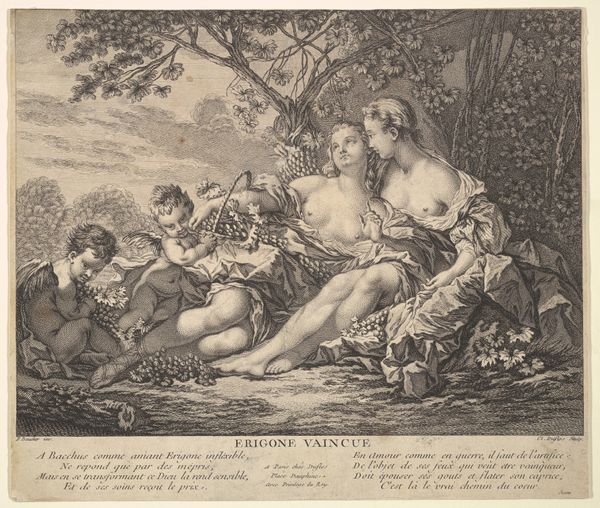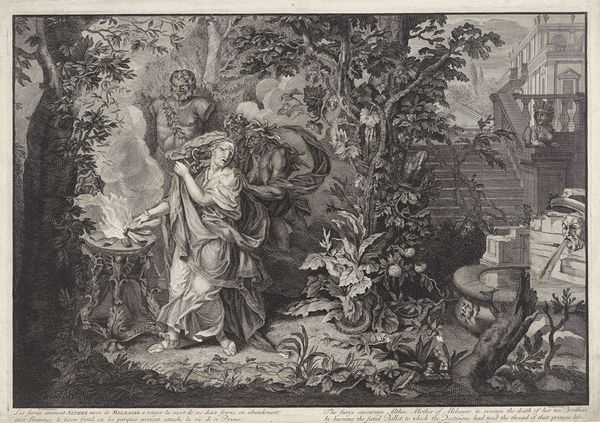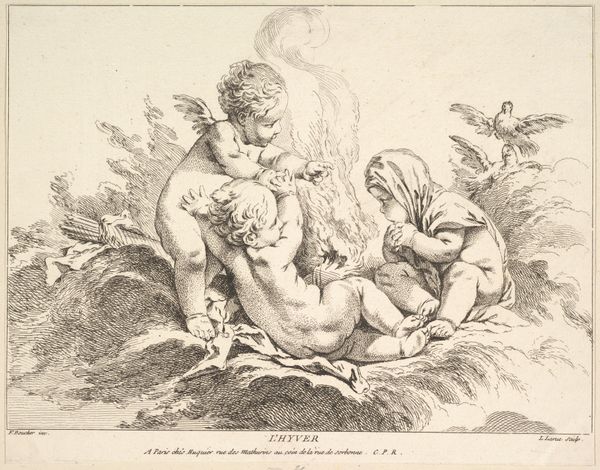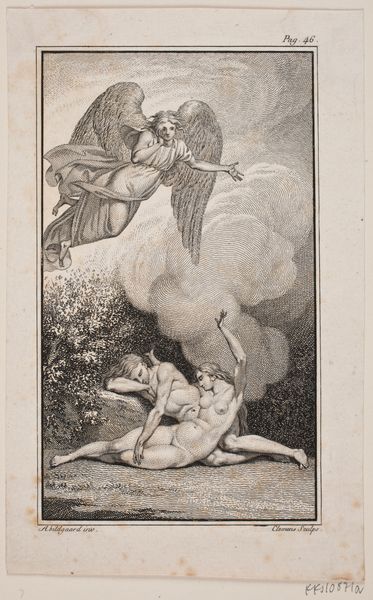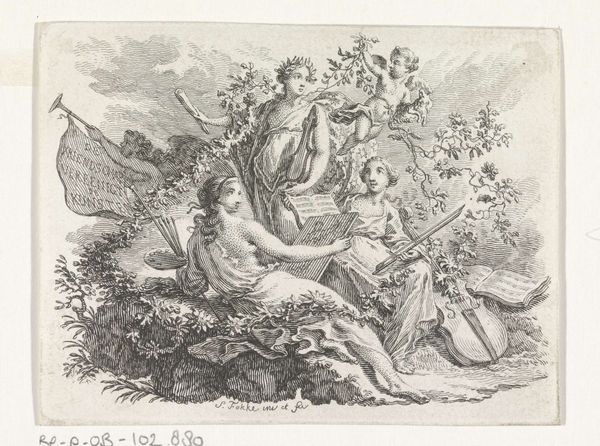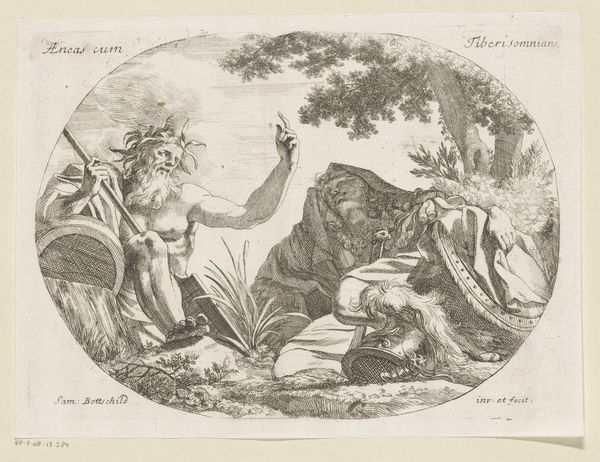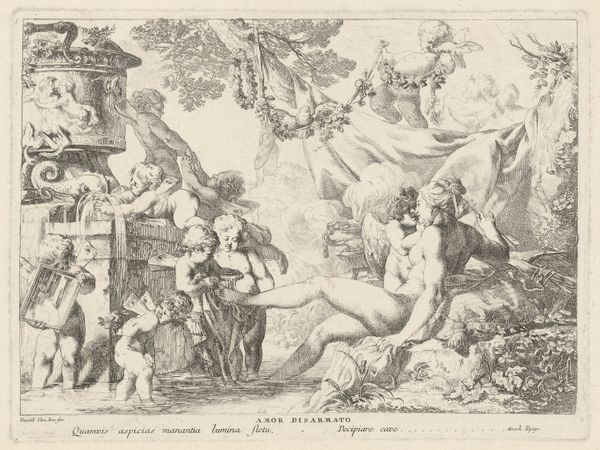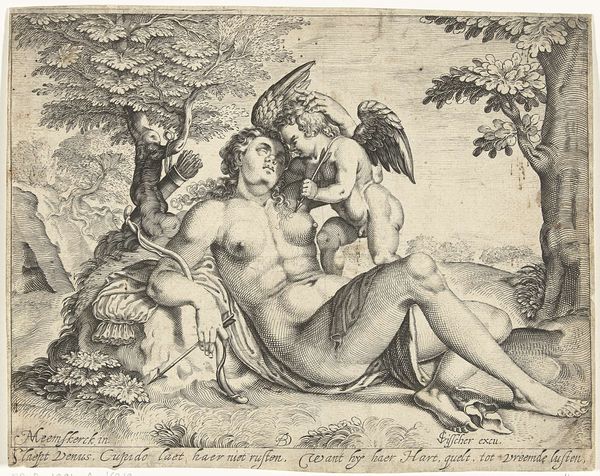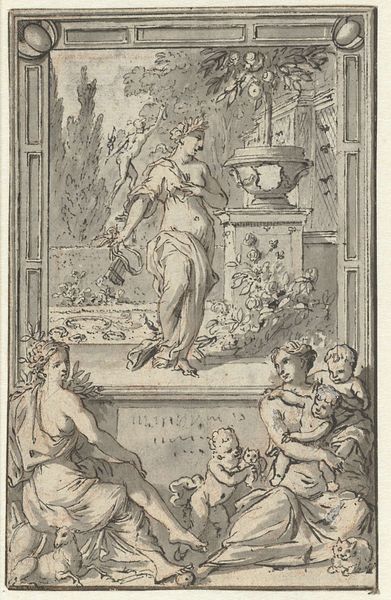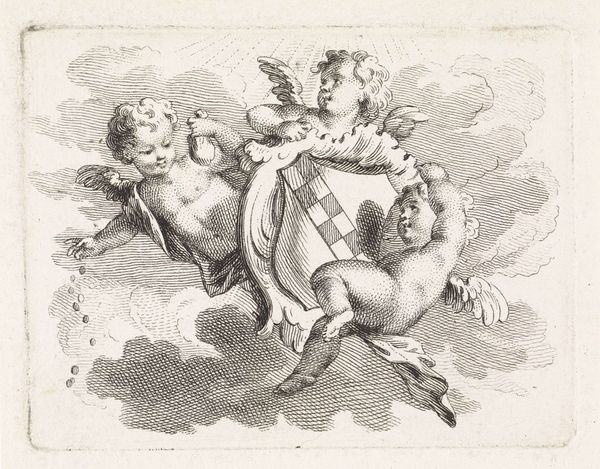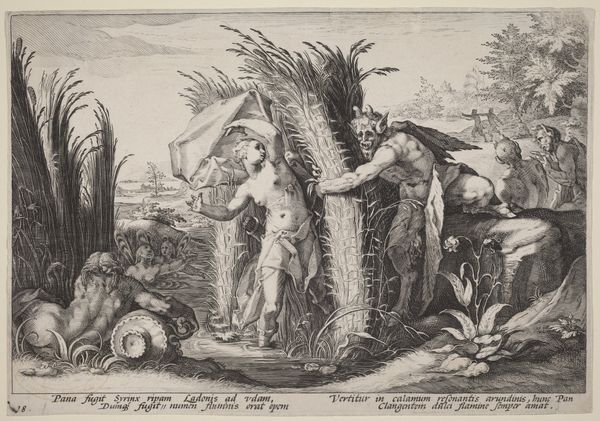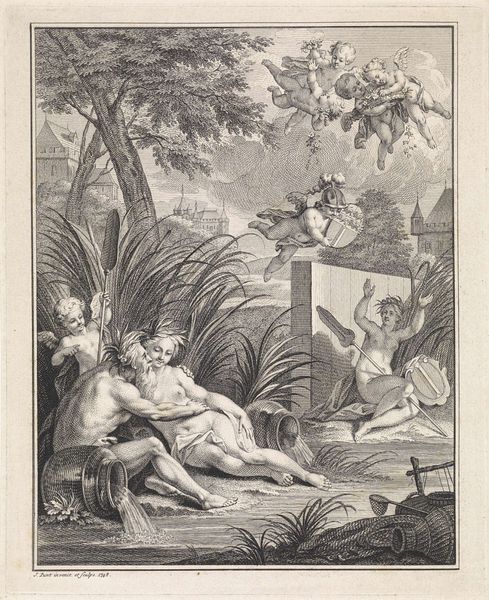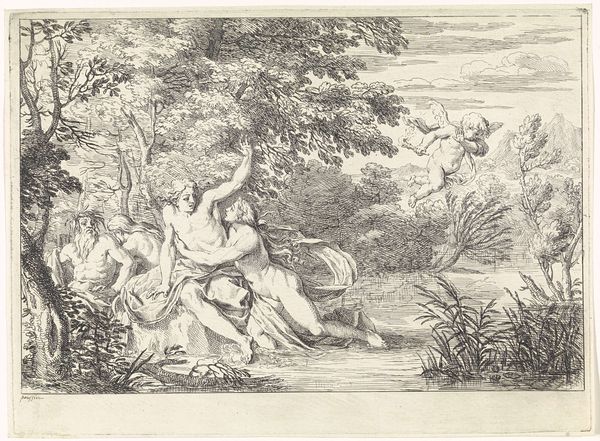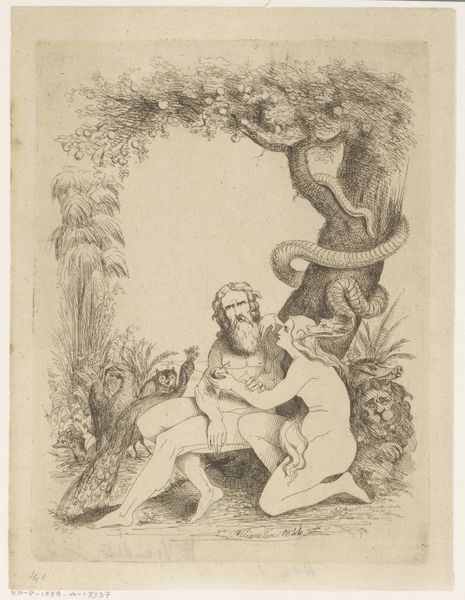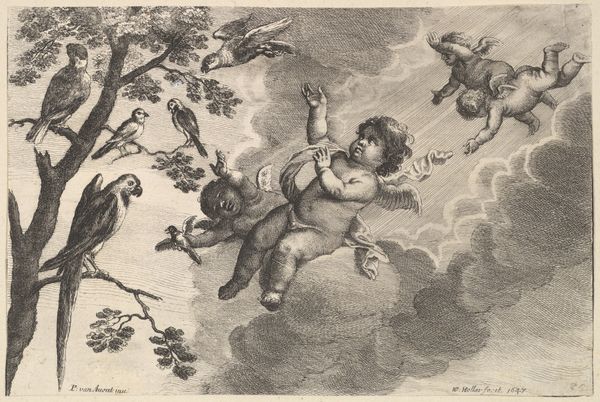
De Orangerie: De Hollandse Cupido, uitrustend van de vermoeienissen van het planten, 1796 Possibly 1796 - 1799
0:00
0:00
drawing, coloured-pencil, print, etching
#
drawing
#
coloured-pencil
#
allegory
# print
#
etching
#
caricature
#
landscape
#
coloured pencil
#
romanticism
Dimensions: height 255 mm, width 355 mm
Copyright: Rijks Museum: Open Domain
Curator: This is “The Orangerie; or, the Dutch Cupid reposing, after the fatigues of Planting,” a print made by James Gillray, probably between 1796 and 1799. The combination of etching and coloured pencil gives it such a unique feel. Editor: Yes, it's fascinating how Gillray uses those materials! There’s such a bizarre yet calming landscape feeling to the image. The Cupid is lying there next to an enormous bag of money while women holding farming tools float above… How do you interpret this work through its materials? Curator: I see it as a potent commentary on the Dutch economy through the lens of printmaking. The etching allows for detailed satirical lines, poking fun at those figures floating above. The colored pencil then softens the harshness of the etching, creating a veneer of respectability that ultimately reveals the exploitation inherent in Dutch commerce and potentially colonialism. Editor: Exploitation, interesting! The etching serving the satire. Curator: Yes! Consider the labor involved in creating the print itself - the craftsman hours to etch the plate, the cost of materials, the consumption of prints by the public. These become mirrored in the depicted landscape where fruit and the cupid point to overproduction of colonial enterprise. What kind of socio-political context can we apply to its means of production? Editor: I never thought of the material processes mirroring the subject matter! The etching makes this sharp political point through careful reproduction of Gillray's drawing. How subversive for the period, and using reproductive print media no less! Curator: Precisely! By paying close attention to production, the materials, we unearth the layers of meaning embedded in this seemingly innocent landscape. Editor: This has really made me think about prints in a different light - how materials and context can create such potent cultural analysis! Curator: Indeed. It's all interconnected, isn't it? The making, the selling, and the meaning all reflecting the broader social and economic landscape.
Comments
No comments
Be the first to comment and join the conversation on the ultimate creative platform.
